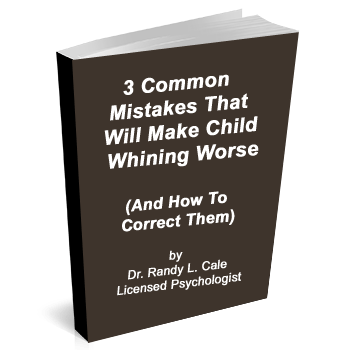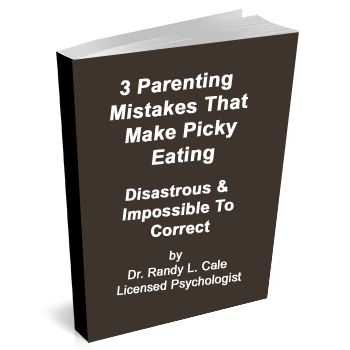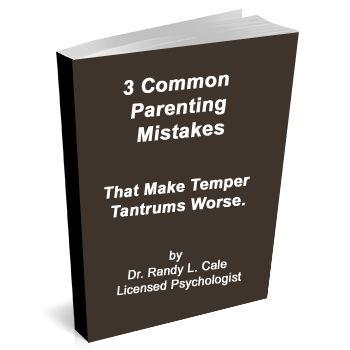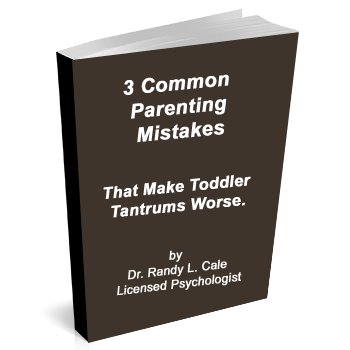I recently wrote that there is value in learning to stay clear and firm in setting limits for children. When we realize that the ‘wall’ is a good metaphor for staying steady and strong, unyielding to pressure and words, then we can begin to teach children how reality tends to work, and thus prepare them better for life. However, I received several emails from readers emphasizing this question: “Okay Dr. Cale, I want to be firm, but how do you set limits…like a wall? I set up rules, write them down, and the kids just ignore the limits stated in the rules. Help!”
We don’t enforce limits with rules. We need more.
Too often I hear from very well-intended parents who set up elaborate behavior plans integrated into a more elaborate set of rules. Generally, this is a waste of time for three reasons.
Too much complexity and reliance upon too many words.
There is often too much complexity in rules, and writing them down just amplifies the idea that all those words will change behavior. It doesn’t. Words alone are rarely effective at changing or managing behavior. Spewing out lots of words does create the illusion that we are doing something, but the futility of all those words usually becomes self-evident.
It’s not that rules aren’t beneficial, as they are. We just need to keep them simple, and clear. Stick to what is important, and keep the wording simple. Focus on the basics that maintain good, healthy habits.
Rules should be a pointer to limits, that will support healthy habits.
The ‘rule’ should not just be a wish list of wanted behaviors or actions from the kids, as these are not effective. Any effective rule will have a clearly stated limit attach, such as ‘do your homework first, when you get home’ or ‘all electronics put away before coming to the table for any meal.’ Those are simple examples, but you see that there is a limit related to the habit we want to support.
However, one more piece is required. We see that there is an enforcement process built into the rules I offered above. Please realize: Rules do not enforce limits; they should (if done correctly) point not only to the limits but most critically to the consequences that enforce the limits. Without both, rules are meaningless.
Consequences make rules and limits have meaning.
Thus, we see that a rule, pointing to a limit, is generally worthless unless a consequence is associated with violation of that limit. In other words, it sounds like this; “Sweetheart, here’s the limit. Step over it, and here’s the consequence that happens automatically.”
No negotiation, and no argument. The consequence must be clearly stated in advance (to be fair) and then honored with impeccable consistency. Notice, if you read the article a few weeks ago about the wall, that this is exactly how the ‘wall’ responds. Impeccably consistent if you test the wall!
Thus, the secret juice here is making sure that you have a simple, clear, and immediate consequence to any violation of a rule. So, for few examples, the effective rules would read like this:
- “Electronics put away before any meal. If brought to the table, in any way, you lose the device for 48 hours starting immediately.”
- “All homework is done before any play. Show me your work, and if okay, you can begin play. If you cheat this system, anything you play with goes in the penalty box for 48 hours.”
- “If mom or dad is driving, voices and actions will remain calm and peaceful. If we get distracted by your negative behavior, the car will pull over and remain so until there is completely quiet for five minutes.”
Those are three simple examples, of having a rule with the three critical pieces: the first simplicity, the second a clear limit included, and finally a consequence is attached that will enforce the limit.
All of this is worthless without consistent follow-through with the consequence.
Keep in mind, talk is cheap. Very cheap when it comes to changing behavior. Thus, if this is to make any difference, you must ensure you maintain the consequence each time. Otherwise, if open to negotiation, you will end up constantly negotiating. With time and the incessant negotiations, the limits completely erode. Don’t let this happen. Just be calmly consistent in maintaining the limits and ease will evolve, after a few weeks of complaints and resistance. This is natural, and it will pass.
New Parenting Groups Coming To Clifton Park And Available Online.
Want to learn more about how to set limits, and maintain a peaceful and loving home? Most of us need some more detail, and coaching, in this world of challenges. If you are interested in participating in group training for parents, you can do so locally in the Albany-Saratoga Springs area, with Dr. Cale offering parent training in small groups starting in January. If interested, reach out for more details at 518-383-0600.
You will learn tools that make life easier, give your kids more happiness, and put them on the path to more independence and success.














